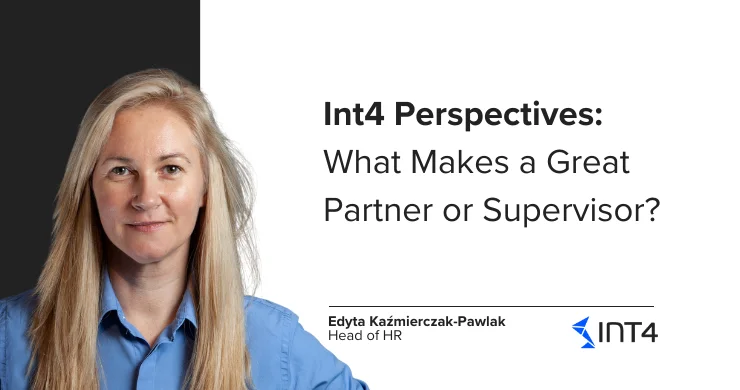You can’t build a roof without solid pillars!

Let me introduce my guest
My today’s guest is a Program Manager at SAP managing the SAP S/4HANA Add-Ons program. He has been dealing with SAP, especially with its engineering unit, for nearly 15 years. You could have met him as a speaker on stage at SAP events like SAP DKOM, SAP TechEd and several customer and partner workshops. My guest is really passionate about training, coaching and mentoring among the SAP community.
About S/4HANA conversion projects, areas of SAP that are worth to learn for the future, and the differences between “Brownfield” and “Bluefield” implementations in practice, Sean D’Silva is interviewed by Jarosław JZ Ziółkowski.
Reading time: 7 minutes
1. You have spent almost 15 years at SAP going through various positions from Software Quality Engineer to S/4HANA Add-ons Program Manager. Which part of this adventure was most engaging for you?
Every phase of my journey at SAP has been memorable. Each stage has given me lessons for a lifetime. But if I must choose one, I would say the last five years ever since I have been part of the S/4HANA unit. This tenure has given me some of my best moments professionally, in terms of the learning and growth, the network with colleagues, customers & partners, and the privilege and opportunity to support the SAP community and pay it forward.
2. Okay, now it is clear to me why you described yourself on LinkedIn as an “SAP S/4HANA Enthusiast”. But please shed more light on the following matter. What does S/4HANA have in itself, compared to previous versions of this system, that it evokes so many good emotions in you?
While it’s good to be safe and stay in your comfort zone, change always begins at the end of your comfort zone. SAP ERP ECC has been a great product that we have delivered, no doubt about that. However, businesses need to start thinking about the future-ready ERP system. I mean, start thinking about how they will run their business processes in the future, maybe ten years from now. And that’s the reason they should start their journey with SAP S/4HANA because it offers a platform where all innovations will happen with cutting edge technologies. Whether it is Artificial Intelligence, Machine Learning, Conversational bots, Robotic process automation and the likes, SAP S/4HANA offers the foundational platform to adopt all these technologies and capabilities. SAP S/4HANA remains the core pillar of our Intelligent enterprise strategy, and I always say that you cannot imagine building a roof without having a solid pillar.
3. However, some companies say – we only go for S/4HANA because we need official support from SAP, so for us, it’s a typical technical project only. Is that also a possible approach?
This is a possible approach, but does a company want to stop at just that? The real value of SAP S/4HANA can be leveraged by consuming the innovations delivered via the Fiori apps, embedded analytical apps, AI/ML & RPA capabilities, etc. Many enterprises start with a technical project to SAP S/4HANA to minimize the risk and onboard to the new platform quickly and then absorb innovations subsequently over a multi-year roadmap. Remember that moving to SAP S/4HANA is not an overnight hop, but a marathon. Customers who have started early have realized the benefits and are differentiating themselves from their competition. My advice to those who are yet to commence is to do that as soon as possible.
4. Let’s talk about testing for a while, because the skill most often endorsed by people in your LinkedIn network is “Testing”. That is why I have to ask – what do you think are the most effective approaches to testing when it comes to S/4HANA conversion projects? Can we do UI testing at all? What about testing other components such as SAP application interfaces, etc.?
Testing requires significant time and resources; hence we must be very clear about the test purpose. A good test purpose can help translate the basis for a robust test strategy, which can go a long way in the overall success of the project. The test strategy should cover the test scope, the test data, the different test types, test environments, test management and governance, tools to be used, etc.
When it comes to the test approach, “War room testing” is a format that I like which gets all the involved people together in a single room and test in a focused way for a specified duration. I have also liked the “Exploratory testing approach” because of the random and unstructured nature of its format, as it usually helps uncover defects that may be missed using structured testing approaches.
No matter what approach is chosen, it is crucial to keep testing activity separate from the training of users. It may sound efficient to club both together, i.e. to train the users and to test in one step, but it has usually not proven to benefit either activity.
5. Let’s talk a little bit about migrations now. Most people in our community have no trouble telling the difference between “Brownfield” and “Greenfield” implementations. And I would like to know, how does the implementation of “Brownfield” differ from “Bluefield” in practice?
“Brownfield”, which also refers to the system conversion process in SAP terminology, is about converting an existing SAP ERP ECC system directly into an SAP S/4HANA system. Basic tools like SAP Readiness Check, SAP Maintenance Planner, Simplification Item Check Framework, etc., can be useful for this purpose, especially during the preparation phase, followed by the Software Update Manager (SUM) for the actual conversion process during the realization phase. This process takes over the existing business processes and data into the S/4HANA system.
“Bluefield”, which also refers to the selective data transition process in SAP terminology, on the other hand, is about selectively moving specific applications, business processes and data to SAP S/4HANA. This is typically when a customer wants to slice parts of the ERP system and move it to SAP S/4HANA, and not take it over entirely as in the case of system conversion. At this point, a customer can do this only via SAP services or individual partners that have the skills & tools to execute such a project.
6. As for the projects, you often work with clients from all over the world. That’s why you shouldn’t have a problem with answering the question about the part of the globe that uses SAP solutions the most often.
SAP has over 4 lakh customers spanning across 180 countries. We have established a mark on the whole world for almost half a century through our business process expertise. We have a well-distributed presence of SAP across APJ, EMEA and the Americas. We are among the top 20 brands in the world at 17th position according to the “2020 BrandZ Top 100 Most Valuable Global Brands report”. Our brand positioning has ensured that our reach has a positive impact across the world. In short, SAP is all around us, and I wouldn’t break it down to a specific part of the globe!
7. I also noticed that you travel a lot around the world to share your expertise. I’m wondering what the workshops with Sean look like, and most importantly, how do you explain the most complicated matters to your Customers?
The chance to speak to customers and partners in person and to understand their point of view about SAP, the market outlook, pain points and open opinions cannot be replaced by anything else when it comes to improving the company’s products and services.
Simplicity is the only answer to tackling complexity. In my sessions, I extensively make use of the whiteboard and real-life examples to break down topics. That has helped me explain concepts better. Besides, when you build an environment of trust, it is not much of a struggle to have a complicated or uncomfortable discussion.
I’ve always been a firm believer of the fact that your learning is amplified by sharing your expertise with others and paying it forward. So, I try not to miss out on any opportunity to share whatever little knowledge I have gained in my professional career. I am also very passionate about supporting the new talent community at SAP. I’ve had the opportunity to conduct a few sessions for the Scholar community, and also endorsed colleagues one-on-one when they needed help.
To sum it up, I’ve been extremely privileged to have had the chance to share my expertise with the SAP ecosystem around the world through several workshops organized by SAP. This part of my job has given me the most satisfaction, compared to the regular work at my desk, and I am truly grateful for these experiences!
8. Let’s segue a little bit. COVID-19 influences many aspects of our lives, including SAP-related projects. How does work during the pandemic and the implementation of existing tasks during the lockdown look like? Are you observing a slowdown in these areas? Or maybe the opposite?
COVID-19 has not been biased to any specific region, customer or industry. It has impacted everyone in some way or the other. In the beginning, we did not know what to expect during and post the lockdown. While organizations encountered business disruptions initially, SAP was quick to act and support our ecosystem through several offerings for our customers & partners. The SAP “backtobest” portal has over 50 offerings for customers, partners and businesses to get back on their feet and come out of this slump caused by the COVID-19 pandemic.
Customers with legacy systems are struggling to wade through these troubled waters because of a lack of business agility and lack of transparency in their cash flows, liquidity, inventory, etc. We are seeing a lot of slow adopter customers think seriously about their digital transformation plans and graduating from their legacy ERP to SAP S/4HANA.
On the project execution front, we are being made aware that a lot of SAP S/4HANA implementation projects are being driven virtually with almost a similar success rate as before the lockdown. The general feeling is that organizations are now seriously considering preparing themselves for the future and introducing technology and innovations for business agility & automation.
9. Last but not least, a question about the presence and future of SAP. I’d like to know what areas of SAP are and will be worth learning in the future? Is it worth dealing with an SAP backend, e.g. classic ABAP, SAP Integration, e.g. PI/PO and CPI, or maybe an SAP frontend, such as FIORI/UI5?
I am going to be a little biased and say SAP S/4HANA. This has been SAP’s fastest-growing product in terms of adoption, and we are continually innovating in this space and bringing out new capabilities with every release. A few months back, SAP also announced the maintenance commitment of SAP S/4HANA until the end of 2040. Considering this, I would place my bet on SAP S/4HANA to be an excellent area to immerse yourself, learn and grow along with the product. SAP S/4HANA is an ocean in itself, and you can choose your specialization in the field of procurement, finance, manufacturing, service, Fiori, technical tools, etc.
The Leadership teams of enterprises have always put forward the need to have skilled resources for running their projects. A study by IDC in 2019 showed that projects driven by adequately trained implementation teams showed an 11% faster deployment time than through projects driven by teams that did not have sufficient training. My recommendation to the SAP community is to continually condition yourself towards a growth mindset and make a commitment to lifelong learning – through books, experiences and people.
Find me via LinkedIn
Read also:
1. Life writes the best “scenarios”. Technology world, according to James Olcott
Popular tags
ABAP int4 INT4 IFTT Int4Interview S/4HANA SAP AIF SAP CPI sap integration


